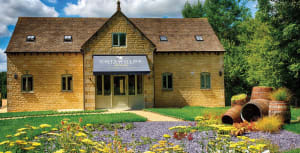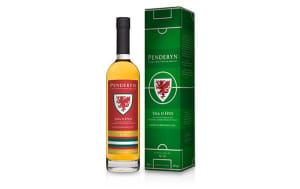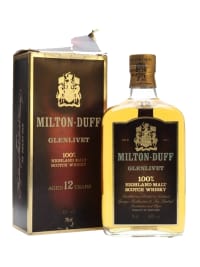In the captivating world of whisky production, where time-honored traditions and scientific alchemy converge, there exists a phenomenon that carries both a mystical allure and a tangible impact on the final product. This enigmatic phenomenon is known as the "Angel's Share." As the amber elixir slumbers within wooden casks, an ethereal dance between the spirits and the heavens takes place, yielding a transformation that has fascinated connoisseurs and distillers alike for generations.
The Angel's Share is far from a whimsical term; it is a crucial aspect of whisky maturation, representing the evaporation of precious liquid over the years it spends aging in barrels. This process has a profound influence on the final character and flavor of the whisky that eventually graces our glasses. Understanding the concept of the Angel's Share not only provides insight into the artistry of whisky-making but also reveals the delicate balance between nature, science, and craftsmanship that makes each sip an experience unto itself.
In this exploration, we embark on a journey into the heart of the Angel's Share, delving into its origin, the science behind its occurrence, and its profound impact on the whisky-making process. From the whispered legends that surround its name to the tangible effects it leaves on the liquid gold that fills our glasses, join us as we uncover the essence of the Angel's Share and uncover the hidden stories that enrich the world of whisky production.
Defining the Angel's Share

What it is and why it matters in whisky production
The Angel's Share is a captivating term that embodies the romantic and scientific facets of whisky maturation. In the realm of whisky production, this term refers to the gradual loss of liquid that occurs as whisky ages in wooden casks. The process is akin to a tithe to the heavens, where a portion of the whisky is offered to the angels in exchange for the transformation that transpires within the cask.
The significance of the Angel's Share in whisky production cannot be overstated. While it may appear as a simple evaporation process, it is, in fact, a dynamic interaction between the elements and the spirits, leading to the concentration of flavors and the development of the complex character that distinguishes aged whiskies. This phenomenon embodies the fusion of nature's influence and the craftsmanship of distillers, yielding a symphony of aromas and flavors that would not be achievable without this ethereal exchange.
The Science behind the Angel's Share: Evaporation of Alcohol and Water During Aging
At the heart of the Angel's Share lies a fundamental scientific process: evaporation. As whisky resides within wooden casks, the porous nature of the wood allows air to interact with the liquid contents. This interaction sets off a chain reaction of evaporation, where alcohol molecules and water vaporize into the atmosphere.
During this process, the alcohol molecules, being more volatile, tend to evaporate at a faster rate than water molecules. This results in a gradual reduction of the alcohol content in the cask, leading to a higher concentration of flavors and an intensified aroma profile in the remaining whisky. As the whisky interacts with the wood, it extracts compounds such as tannins and lignins, further contributing to the evolving flavor palette.
Factors Influencing the Rate of Evaporation, Including Climate, Location, and Cask Type
The rate at which the Angel's Share occurs is influenced by a multitude of factors, each contributing its own unique signature to the final whisky. One of the most significant factors is the climate in which the whisky is aging. In regions with higher temperatures and lower humidity, such as the scorching heat of Kentucky or the brisk winds of Scotland, evaporation tends to be more pronounced. This results in a more concentrated and intensely flavored whisky.
The geographical location of the distillery also plays a role. Distilleries situated in coastal regions might experience different evaporation rates compared to those located inland due to the varying levels of humidity in the air.
Additionally, the type of cask used for aging contributes to the Angel's Share. Different woods have distinct permeabilities, affecting the interaction between the liquid and the atmosphere. For example, American oak casks might allow for a higher rate of evaporation compared to European oak casks due to their differing densities and grain patterns.
In essence, the Angel's Share is a dance between the elements and the alchemical process that yields the remarkable elixir we know as whisky. It's a captivating testament to the collaboration between nature's forces and the craftsmanship of whisky makers, resulting in the liquid poetry that enthusiasts savor and celebrate.
Historical Context Of The Angel's Share

Tracing the Origins of the Term "Angel's Share" in the Whisky Industry
The term "Angel's Share" weaves a tapestry of intrigue and history within the whisky industry, drawing from both folklore and practicality. Its origins can be traced back to the heartlands of Scotland, where whisky-making has deep roots. While the exact origin remains shrouded in the mists of time, one thing is certain: the term captures the essence of a phenomenon that has long fascinated those involved in the alchemical art of whisky production.
The term itself is rooted in the idea that as whisky ages in its oak casks, a portion of the liquid is offered to the angels above. This offering is in the form of the ethereal vapor that evaporates from the casks during maturation, seemingly ascending to the heavens. This concept, while steeped in mysticism, also mirrors the very practical reality of the evaporation process inherent to whisky aging.
Cultural and Historical Significance of the Concept in Various Whisky-Producing Regions
The Angel's Share has not only found its place in the lexicon of whisky-making but has also woven itself into the cultural fabric of various whisky-producing regions. In Scotland, the heartland of whisky production, the concept of the Angel's Share is intertwined with the romanticism of the Highlands and the rugged landscapes of Islay. Here, the idea of an offering to the celestial beings is harmoniously blended with the practical understanding of alcohol evaporation, adding layers of intrigue to the narrative of whisky maturation.
In Ireland, the land of whiskey with its own rich traditions, the Angel's Share resonates as a symbol of the delicate dance between nature's forces and human craftsmanship. The concept is cherished as a testament to the devotion and patience required to produce fine Irish whiskey, inviting aficionados to ponder the symbiotic relationship between the terrestrial and the ethereal.
Similarly, in the United States, where bourbon and rye whiskies thrive, the Angel's Share embodies a reverence for tradition and an appreciation for the harmony between the aging spirit and the oak barrels. The significance of the Angel's Share extends beyond the liquid lost to evaporation; it represents the time-honored connection between distillers, their craft, and the very elements that shape the final product.
Across the world, whether it's the peat-laden whiskies of Islay or the smooth bourbons of Kentucky, the Angel's Share stands as a bridge between science and mystique, between history and innovation. It is a nod to the ancient practices that have guided whisky-makers for centuries, an acknowledgment of the natural processes that are integral to the alchemical transformation of grains into gold. Through the concept of the Angel's Share, whisky enthusiasts are invited to partake in a journey that transcends time, connecting them to the heritage and essence of a spirit that has captured the hearts and palates of generations.
The Evaporation Process
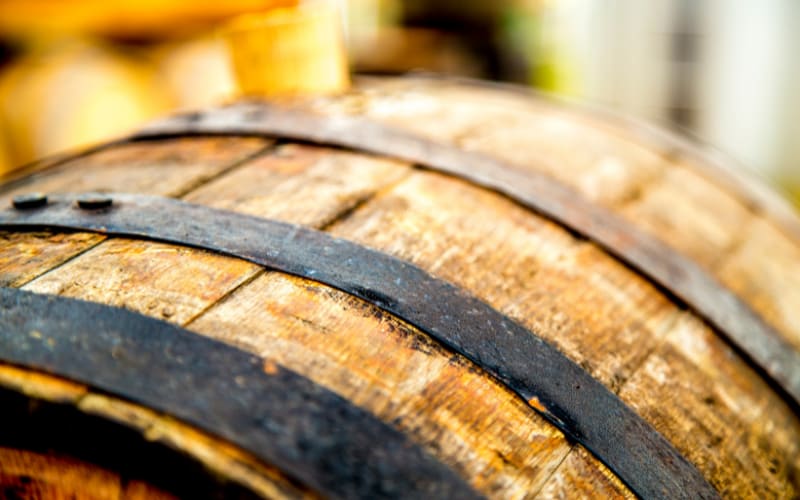
Detailed Breakdown of How Alcohol and Water Evaporate from Whisky Casks Over Time
The evaporation process of the Angel's Share is a delicate dance between the whisky within the cask and the surrounding environment. As whisky rests in wooden casks, it undergoes a dynamic exchange with the air, resulting in the gradual loss of both alcohol and water. This process unfolds over the years, imparting unique characteristics to the liquid and contributing to the complexity of matured whisky.
The evaporation process primarily involves alcohol and water molecules, each with distinct behaviors due to their chemical properties. Alcohol, being more volatile than water, tends to vaporize at a faster rate. As the whisky ages, alcohol molecules escape from the liquid and rise as vapor into the headspace of the cask. Simultaneously, water molecules also evaporate, but at a slower rate, given their comparatively lower volatility.
How Evaporation Affects the Whisky's Flavor Profile, Concentration, and Aging Characteristics
The Angel's Share isn't merely an aesthetic phenomenon; it's a transformative force that contributes significantly to the evolution of whisky's flavor, concentration, and aging characteristics. As alcohol evaporates more readily than water, the remaining whisky within the cask becomes progressively richer in flavors and aromas. The flavors become more concentrated, resulting in a bolder and more intricate profile.
The interaction between the whisky and the wood of the cask is intensified by the evaporation process. The increased contact with the cask's interior causes the whisky to absorb compounds such as tannins, lignins, and vanillin from the wood. These compounds introduce notes of vanilla, spice, and even subtle smokiness to the whisky, enhancing its complexity and depth.
As the cask breathes in and out through the seasons, the fluctuating temperatures and humidity levels further amplify the impact of evaporation. During warm periods, the cask expands, allowing whisky to penetrate deeper into the wood. When the temperature drops, the cask contracts, pushing the whisky back out and drawing in fresh air. This cyclic interaction contributes to the interplay of flavors between the spirit and the wood.
The Angel's Share doesn't merely influence the concentration of flavors but also plays a role in determining the whisky's age. Over time, the aging process softens the whisky, rounding out harsh edges and melding diverse components into a harmonious symphony of taste and aroma. The interaction with the wood also contributes to the whisky's color, imparting warm, amber hues that evoke images of rich heritage and tradition.
In essence, the evaporation process of the Angel's Share is a narrative of transformation. It signifies the distillers' collaboration with nature, their understanding of chemistry, and their mastery of the subtleties of whisky production. Through this ethereal exchange, whisky journeys from raw spirit to refined elixir, embodying the beauty of time, patience, and craftsmanship. The Angel's Share is the alchemical secret behind the coveted character and depth that define a well-aged whisky.
The Impact of the Angel's Share on Whisky Aging
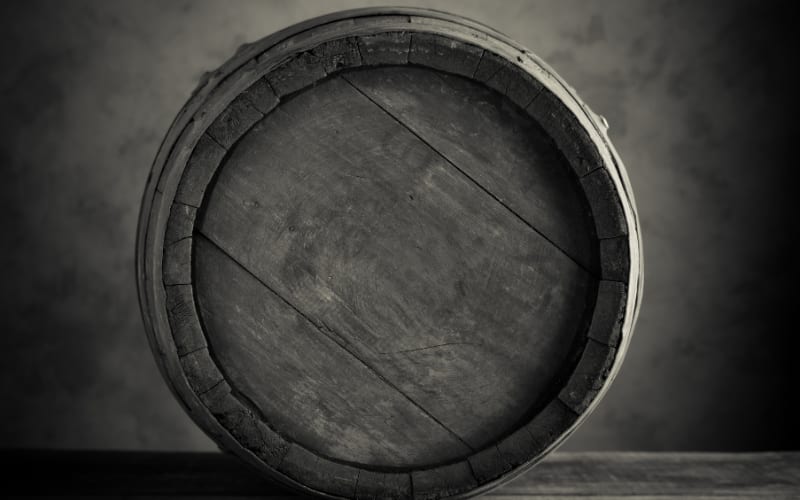
Relationship Between the Angel's Share and the Maturation Process
The Angel's Share isn't merely a passive occurrence in the whisky aging process; it's a dynamic force that intimately shapes the character of the liquid as it matures within the confines of wooden casks. This intricate relationship between evaporation and maturation is at the heart of what distinguishes young spirits from the refined elixirs that enthusiasts covet.
As whisky rests within the cask, it engages in a delicate tango with the surrounding environment. The interaction between the liquid and the air is facilitated by the porosity of the wooden staves, allowing for the exchange of molecules. Here, the Angel's Share plays a pivotal role by facilitating the evaporation of alcohol and water, triggering a cascade of chemical reactions that yield profound flavor transformations.
How Evaporation Influences the Interaction Between Whisky and the Wooden Cask, Leading to Flavor Development
The influence of the Angel's Share extends beyond mere loss; it molds the whisky's very essence. As alcohol evaporates, the remaining liquid becomes more concentrated, heightening the impact of compounds extracted from the wooden cask. This interaction with the wood contributes to the rich spectrum of flavors and aromas that develop over the years.
The porous wood acts as a repository of flavors waiting to infuse the whisky. Tannins, vanillin, lignins, and other compounds within the wood merge with the spirit, weaving intricate flavor profiles. The Angel's Share, through its process of concentration, intensifies these interactions, resulting in flavor notes that range from warm vanilla and honey to complex spices and subtle hints of smoke.
Evaporation plays a role in the development of the whisky's texture as well. With alcohol's departure, the liquid may become softer and silkier on the palate. The interaction with the wood also contributes to a harmonious balance of sweetness, bitterness, and spiciness, rendering the whisky multidimensional and engaging.
The fluctuating conditions within the cask, dictated by temperature and humidity, further accentuate the whisky's interaction with the wood. During warm spells, the wood's pores open, allowing the liquid to penetrate deeper and extract more compounds. In cooler weather, the cask contracts, pushing the liquid back out while enriching it with the flavors captured within the wood. This rhythmic dance between spirit and cask enhances the overall complexity of the whisky.
In essence, the Angel's Share is a partner in the alchemical transformation of whisky. It guides the liquid through a labyrinth of aromatic compounds, coaxing out the nuances that distinguish a young spirit from a matured masterpiece. This interaction between evaporation and the wooden cask is the symphony of whisky aging, orchestrated by the hands of nature, the craftsmanship of distillers, and the dance of time itself. The Angel's Share isn't a loss; it's a contribution to the liquid's journey towards becoming a work of art.
Regional Variances Of The Angel's Share

Comparing the Angel's Share in Different Whisky-Producing Regions
The Angel's Share, though a universal phenomenon in whisky maturation, is not uniform across the globe. It's a dynamic force that responds to the distinct climates and conditions of various whisky-producing regions. From the misty glens of Scotland to the heartlands of bourbon in the USA, each locale contributes its own chapter to the story of the Angel's Share.
Factors Contributing to Variations in Evaporation Rates, Including Climate and Humidity
1. Climate:
The climate of a region plays a pivotal role in determining the rate of evaporation and thus the Angel's Share. In warm and arid regions, such as parts of the United States, evaporation tends to be more pronounced due to the higher temperatures. The intense heat accelerates the process, resulting in a faster reduction of liquid within the casks. In contrast, cooler and more temperate regions, like Scotland and Ireland, experience a more gradual evaporation, allowing for a more delicate interaction between the whisky and the wood.
2. Humidity:
Humidity is another critical factor that affects the Angel's Share. High humidity levels slow down the rate of evaporation, as moisture in the air reduces the difference in vapor pressure between the whisky and the environment. This means that regions with higher humidity, like parts of Scotland and Japan, tend to have a lower Angel's Share compared to drier climates.
3. Elevation:
Elevation also comes into play, particularly in regions with significant altitude variations. Distilleries located at higher altitudes often experience more extreme temperature shifts, causing casks to expand and contract more vigorously. This can result in a more pronounced Angel's Share due to the increased interaction between the whisky and the cask.
4. Proximity to the Sea:
Coastal regions have their own impact on evaporation rates. The sea breeze can introduce more moisture into the air, moderating the evaporation process and potentially leading to a lower Angel's Share.
5. Cask Type:
The type of cask used for aging can also influence the evaporation rate. Casks with different densities and thicknesses can affect how much liquid is lost to the Angel's Share. For instance, American oak casks may have a more porous structure, leading to a faster evaporation rate compared to European oak casks.
In essence, the Angel's Share is a chameleon, adapting to the nuances of each whisky-producing region. It's a dialogue between the liquid and its surroundings, a reflection of the environment's embrace. Whether the windswept coasts of Islay, the rolling hills of Ireland, or the sun-drenched landscapes of Kentucky, each region shapes the Angel's Share in its own unique way, leaving an indelible mark on the character of the whisky it nurtures.
Economic Considerations Regarding The Angel's Share

Discussion on the Economic Implications of the Angel's Share for Distilleries
The Angel's Share, while a poetic and essential part of whisky maturation, carries economic implications that distilleries must carefully navigate. As whisky rests in casks, a portion evaporates, resulting in a financial loss for distillers. This loss can be significant, especially for long-aged expressions that spend decades aging. While the monetary impact might be viewed as a challenge, it's crucial to recognize that the Angel's Share isn't just an expense; it's an investment in crafting exceptional whisky.
Balancing the Financial Loss Due to Evaporation with the Benefits of Enhanced Flavor and Aging
Distilleries must find a delicate balance between the monetary cost of the Angel's Share and the invaluable benefits it imparts to the whisky. The evaporation process contributes to the concentration of flavors, intensification of aromas, and development of complexity that defines a well-matured spirit. These attributes are at the heart of what makes aged whisky so sought after and prized by enthusiasts.
While the financial loss due to the Angel's Share can be daunting, it's mitigated by the appreciation that comes from producing exceptional, premium whiskies. These aged expressions often command higher prices in the market due to their nuanced profiles and historical significance. The reputation of a distillery can be significantly enhanced by the quality of their aged offerings, resulting in brand loyalty and increased demand.
Distilleries often approach this balance by offering a range of expressions, including both younger and older whiskies. Younger expressions, while not as affected by the Angel's Share, provide a consistent revenue stream. On the other hand, aged whiskies offer connoisseurs a chance to experience the profound impact of evaporation on flavor, creating a connection between consumers and the craft of whisky-making.
Ultimately, the Angel's Share showcases the intrinsic link between investment and artistry. The financial sacrifice due to evaporation is offset by the added value and cultural significance of well-aged whisky. While distilleries must manage costs, they also understand that the Angel's Share isn't a loss but a contribution to the heritage and prestige of their products.
In conclusion, the Angel's Share embodies the adage that quality comes at a cost. The delicate dance between economics and flavor is a testament to the craftsmanship that defines the world of whisky. Distilleries that embrace the Angel's Share as a partner in their journey recognize that the investment it demands is far outweighed by the masterpiece it helps create. It's a reminder that the pursuit of excellence requires both sacrifice and celebration.
Mitigating the Angel's Share

Strategies Employed by Distilleries to Minimize Evaporation and Losses
Distilleries, recognizing the financial impact of the Angel's Share, employ a range of strategies to mitigate evaporation and losses while still maintaining the integrity of the maturation process. These strategies aim to strike a balance between preserving liquid and allowing whisky to interact with the cask, ultimately delivering a product that showcases both craftsmanship and sustainability.
1. Cask Conditioning:
Distilleries may use a process called cask conditioning, wherein new casks are filled with water and allowed to swell before being filled with whisky. This reduces the initial loss due to leakage and evaporation by allowing the wood to expand and seal any gaps.
2. Cask Rotation:
Periodic rotation of casks within the storage facility ensures that all casks experience similar conditions over time. This prevents any one cask from experiencing extreme fluctuations that could lead to excessive evaporation.
3. Microclimates and Storage Conditions:
Distilleries carefully choose storage locations to optimize the Angel's Share. Factors such as temperature, humidity, and air circulation are considered when selecting the ideal environment for aging. Some distilleries build storage warehouses in areas with milder climates to reduce evaporation rates.
Innovations in Cask Technology and Storage Conditions
1. Ventilation Systems:
Modern distilleries may incorporate ventilation systems that allow controlled airflow within the storage warehouses. This helps regulate temperature and humidity levels, reducing the impact of extreme environmental changes on evaporation rates.
2. Humidity Control:
Sophisticated humidity control systems enable distilleries to maintain optimal humidity levels within the storage space. This technology minimizes excessive evaporation while still allowing for the desired interaction between whisky and wood.
3. Advanced Sealants and Cask Design:
Innovations in cask design and construction include improved sealants that reduce leakage and evaporation. Distilleries also experiment with different types of wood, stave shapes, and cask sizes to optimize the aging process and control evaporation rates.
4. Non-Intrusive Aging Techniques:
Some distilleries explore non-intrusive aging techniques, such as ultrasonic treatment, which can accelerate the maturation process and minimize the impact of the Angel's Share.
5. Data Monitoring and Analysis:
Modern technology allows distilleries to monitor temperature, humidity, and evaporation rates in real-time. This data-driven approach enables them to adjust storage conditions and strategies as needed.
While the Angel's Share remains an inherent part of whisky aging, these innovations and strategies showcase the industry's commitment to preserving valuable liquid while enhancing the quality of the final product. The delicate balance between tradition and technology ensures that distilleries continue to craft exceptional whiskies that reflect both the art of the past and the possibilities of the future.
Cultural Significance Of The Angel's Share

The Angel's Share as a Symbol of Craftsmanship and Patience in Whisky-Making
The Angel's Share transcends its role as a mere physical phenomenon; it has evolved into a potent symbol deeply embedded in the cultural tapestry of whisky-making. Beyond the loss of liquid, it represents the intangible essence of craftsmanship, patience, and dedication that define the world of whisky.
At its core, the Angel's Share embodies the idea that creating exceptional whisky is a labor of love and time. The process of aging, with its inevitable evaporation, underscores the commitment of distillers to produce the finest spirits possible. It serves as a reminder that true artistry cannot be rushed, and that the culmination of years spent in cask is a testament to the distiller's skill and the whisky's potential.
Representation in Literature, Movies, and Popular Culture
The Angel's Share has found its way into the annals of literature, movies, and popular culture, becoming a symbol that resonates with enthusiasts and novices alike. It has captured the imagination of writers, filmmakers, and artists who seek to convey the nuanced beauty of whisky-making.
In literature, the Angel's Share often serves as a metaphor for life's fleeting moments and the essence of time passing. It's an allegory for the irreplaceable nature of experiences that slip away like vapor. This concept has been woven into novels and poems, enriching narratives with the depth and emotion that the Angel's Share embodies.
In movies, the Angel's Share is a recurring motif that underscores the spiritual connection between humans, nature, and the process of transformation. Films like "The Angels' Share" by Ken Loach explore the idea that whisky can be a catalyst for change, much like the change that occurs as the liquid interacts with the cask.
In popular culture, the Angel's Share is often associated with a sense of reverence and ritual. Whisky enthusiasts embrace the concept as a way to engage with the history and mystery of the drink. Tasting sessions become moments of communion, where participants acknowledge the angelic offering as they explore the depths of flavor and character.
Ultimately, the Angel's Share has transcended its role in whisky production to become a symbol that resonates on multiple levels. It's a reminder of the balance between art and science, patience and reward, and the interconnectedness of humans and the environment. Whether in the pages of a book, on the silver screen, or in the quiet corners of a whisky bar, the Angel's Share serves as a poignant reminder of the ethereal magic that is whisky-making.
Conclusion
In the intricate world of whisky production, where science meets artistry and tradition intertwines with innovation, the Angel's Share emerges as a silent yet profound protagonist. As we journey through the evaporation process that defines this ethereal dance between liquid and air, we uncover a narrative that shapes the very essence of fine whiskies.
The Angel's Share, while seemingly a loss of liquid, carries a weight far greater than its physical quantity. It stands as a guardian of flavor, an alchemical accomplice that transforms raw spirit into liquid gold. The process of evaporation isn't just a scientific inevitability; it's a storyteller that imparts depth, character, and complexity to the whisky within the cask. The Angel's Share is the architect of concentration, an enhancer of aromas, and a cultivator of nuanced notes that define a whisky's profile.
Its role in shaping flavor and character is a testament to the delicate equilibrium between the practical and the mystical. The Angel's Share is a celebration of craftsmanship, of distillers who patiently orchestrate the symphony of evaporation, understanding that the passage of time is the artist's brush stroke that embellishes the canvas of whisky. It's a dedication to tradition, a nod to the generations before us who revered this phenomenon, recognizing its contribution to the allure of aged spirits.
Yet, within the scientific calculations and the distiller's expertise, the Angel's Share retains an aura of mystery. It's a reminder that even in our modern understanding, nature still holds secrets beyond our grasp. It's a whisper of mythology, the angels' unseen embrace that enriches the narrative of whisky-making, infusing it with a touch of magic that defies explanation.
In conclusion, the Angel's Share is more than a loss; it's a tribute to the spirits of innovation and tradition, a collaboration between science and art that manifests in every sip of well-aged whisky. It is the embodiment of patience rewarded, the intersection of past and present, and the poetry of transformation. As we raise our glasses to savor the culmination of years spent in cask, let us remember the invisible hands that guided this journey—the angels who take their share and, in return, gift us with the legacy of liquid poetry.

